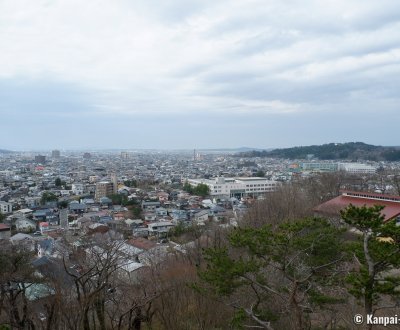Akita
The Northern Capital Facing the Sea of Japan
Akita is the largest city of Tohoku’s western side in the north of Japan. Capital of the eponymous prefecture and former feudal city of the Satake clan, it is essentially renowned for its famous lantern festival Akita Kanto Matsuri held each summer in August. The city is directly connected to Tokyo by the Shinkansen high speed train since 1997.
Akita City is certainly not the first destination to pop when planning a trip to Japan. Isolated on Honshu’s north-western seaside, the capital of Akita prefecture nonetheless has a central JR station directly serving Tokyo in a little than less 4 hours trip by Shinkansen 🚅 bullet train. The trip is included in the regional Tohoku JR Pass and in the nationwide Japan Rail Pass.
Akita did not become one of the country’s attractive economic center, due to the surrounding countryside and its very cold climate in winter. In turn, the city has preserved a more authentic aspect that will definitely please amateurs of regional characteristics. Just take the station’s west exit, from which you can access to most of the sightseeing sites in the center of the city, to fill a day of visits.
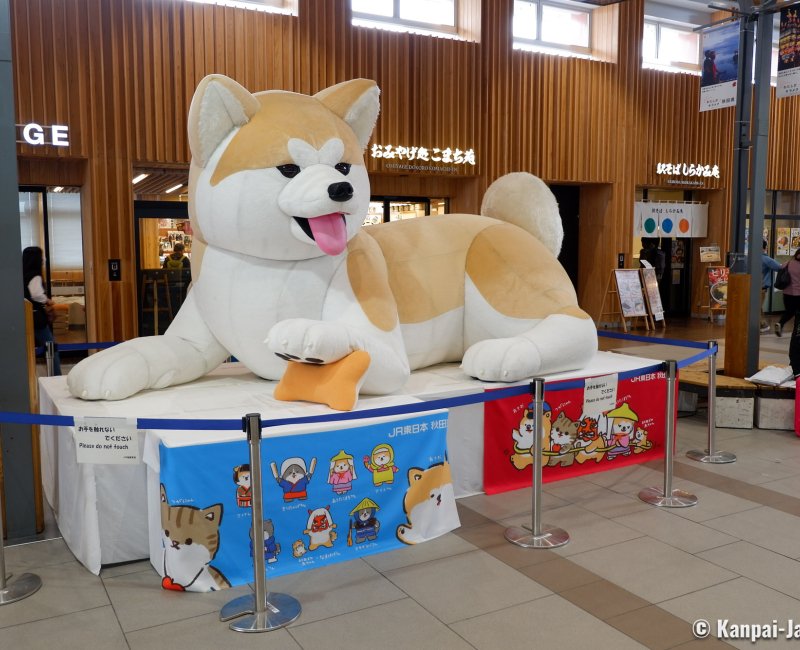
Local market at the exit of the station
In the shopping area sprawling around the central station, you can find the local covered market Akita Shimin Ichiba (Akita Citizen's Market). It is specialized in fish, seafood and seasonal vegetables, and is open every day. About 70 shops distributed in a dozen alleys display fresh products in a convivial and rather peaceful atmosphere. Those who understand Japanese can try to decipher the local dialect spoken between the merchants and their customers for example.
A rest area provides places to sit and enjoy the food just bought. A complete menu is also available for those who prefer to eat like in a restaurant. This food market is a good address to eat and meet the local population.
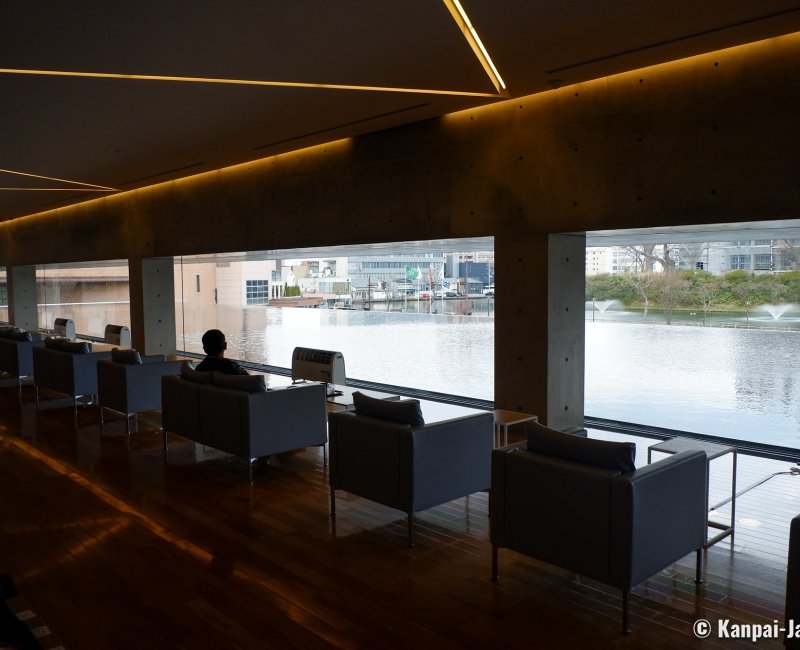
Akita Museum of Art
A little bit further, you will find the Akita Museum of Art, whose rather unusual triangle-shaped building was designed by famous architect Tadao Ando. The simple concrete walls bring perspectives with the large spiral staircase serving the floors.
Completed in 2012, the museum includes 3 exhibition halls, and its permanent collection is dedicated to Tsuguharu Fujita (1886 - 1968), painter also known as Léonard Foujita. Born in Tokyo but infatuated with Western culture, Foujita settled in France in 1913 to paint along with European big names of his times: Picasso, Modigliani, Matisse, etc. He was a successful artist and finally obtained the French citizenship in 1955. He was responsible for the beautiful religious paintings on the walls of Our Lady of Peace Chapel in Reims, nicknamed the Foujita Chapel.
The major artwork of the museum is an immense mural called 秋田の行事 Akita no Gyouji by Tsuguharu Fujita, a title that can be translated as "Events in Akita" and that pictures various scenes of the local life throughout the seasons. An amusing detail: the patron of the painting, Masakichi Hirano, is represented in the crowd of painted characters, on the right side of the painting.
The city also has other interesting exhibitions, such as:
- A local museum in a building of the former Akita Bank, called Akarenga Kyoudokan; and,
- The traditional arts museum Neburinagashi-Kan where the floats and decoration used during Akita’s various great matsuri are on display all year round.
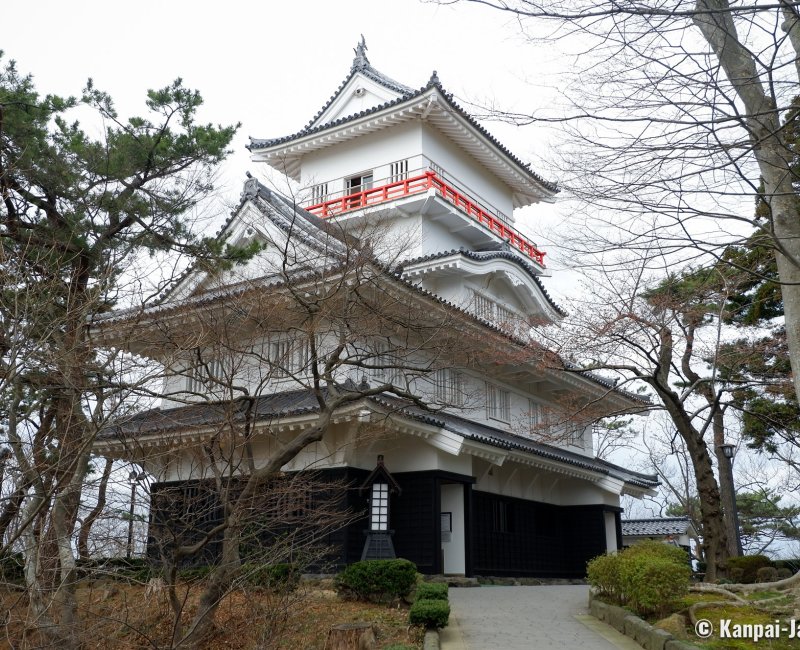
Kubota Castle’s Senshu Park
Just in front of the art museum, discover Senshu Park home to Akita’s historical and spiritual heritage. The city only started to develop from 1602, in the early Edo period (1603 - 1868) under the leadership of daimyo lord Satake Yoshinobu (1570 - 1633), and it first was a fortified castle 🏯-town of the Kubota domain.
Thus, Kubota Castle used to stand on Shinmei Hill, enclosed by fortified walls and moats. Nowadays only a few elements remains, that were rebuilt as a testimony of the past, especially:
- The great entrance gate Otemon (also called Ichinomon), of the heart of the honmaru castle; and,
- An angle turret Osumi-yagura, used as a warehouse and lookout tower. It is now open to the public, with a panoramic view on the city spreading below.
There are other landmarks in the park, such as:
- The house of the guards Omonogashira-gobansho located just next to the Omotemon gate and only authentic pavilion remaining from the feudal times;
- Several Shinto shrines, including Iyataka-jinja, Hachiman Akita and Yojiro Inari-jinja;
- The statue of Satake Yoshitaka (1609 – 1672), 2nd lord of Kubota and Yoshinobu’ nephew;
- A historical museum dedicated to the Satake clan; and,
- Matsushita, a former luxurious ryotei restaurant, dating back to 1916, that is now a cafe, a sake bar and a maiko theater (many Geisha have performed here after WWII).
Senshu Park is the must-see public garden of the city and is enjoyable in all seasons, especially during the blooming sakura 🌸.
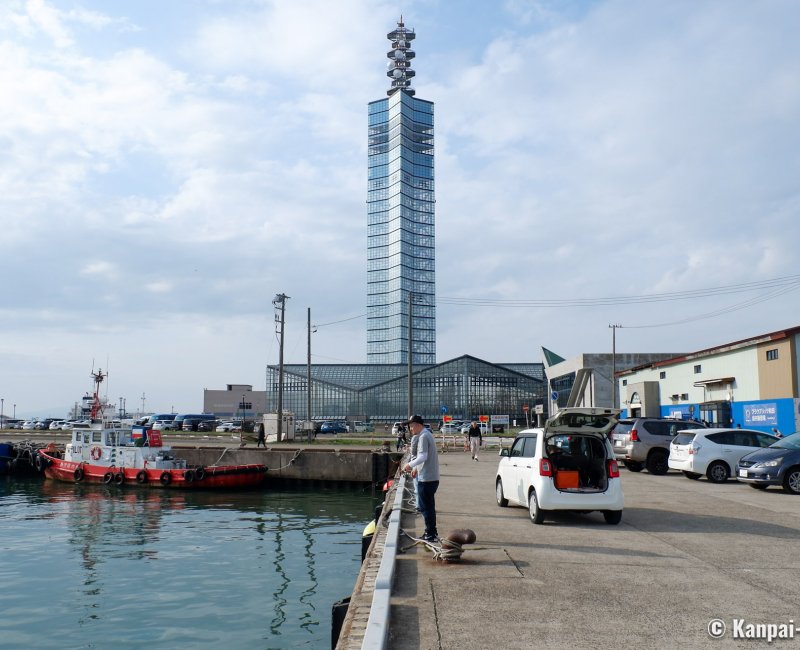
Akita Port’s Road station
Move away from the city center towards the Sea of Japan and stop at Akita Port’s Bus station, Michi no eki Akitako in Japanese. Located in the north-west of the city, about 20 minutes by taxi or 30 minutes by bus, this motorway service area has interesting souvenir shops and the glassed-walls Port Tower Selion springing 143,6 meters high toward the sky.
We especially recommend the tower’s free observatory, located 100 meters above sea level. On a clear weather day, it is possible to see:
- Akita City, its port and the mountains of the Oga peninsula, and Mount Kanpu in the north;
- Mount Taihei in the east;
- Mount Choukai in the south; and,
- The Sea of Japan, whose water sparkle at sunset.
The night view is also very romantic, as the tower is lit up with colors varying according to the seasons and the events.
Akita is a pleasant city to explore for those who would like to go off the beaten tracks and travel the Tohoku region by train. The city can be used as a base to explore the prefecture, especially the Oga Peninsula listed in the UNESCO World Heritage, or the picturesque samurai city of Kakunodate.

